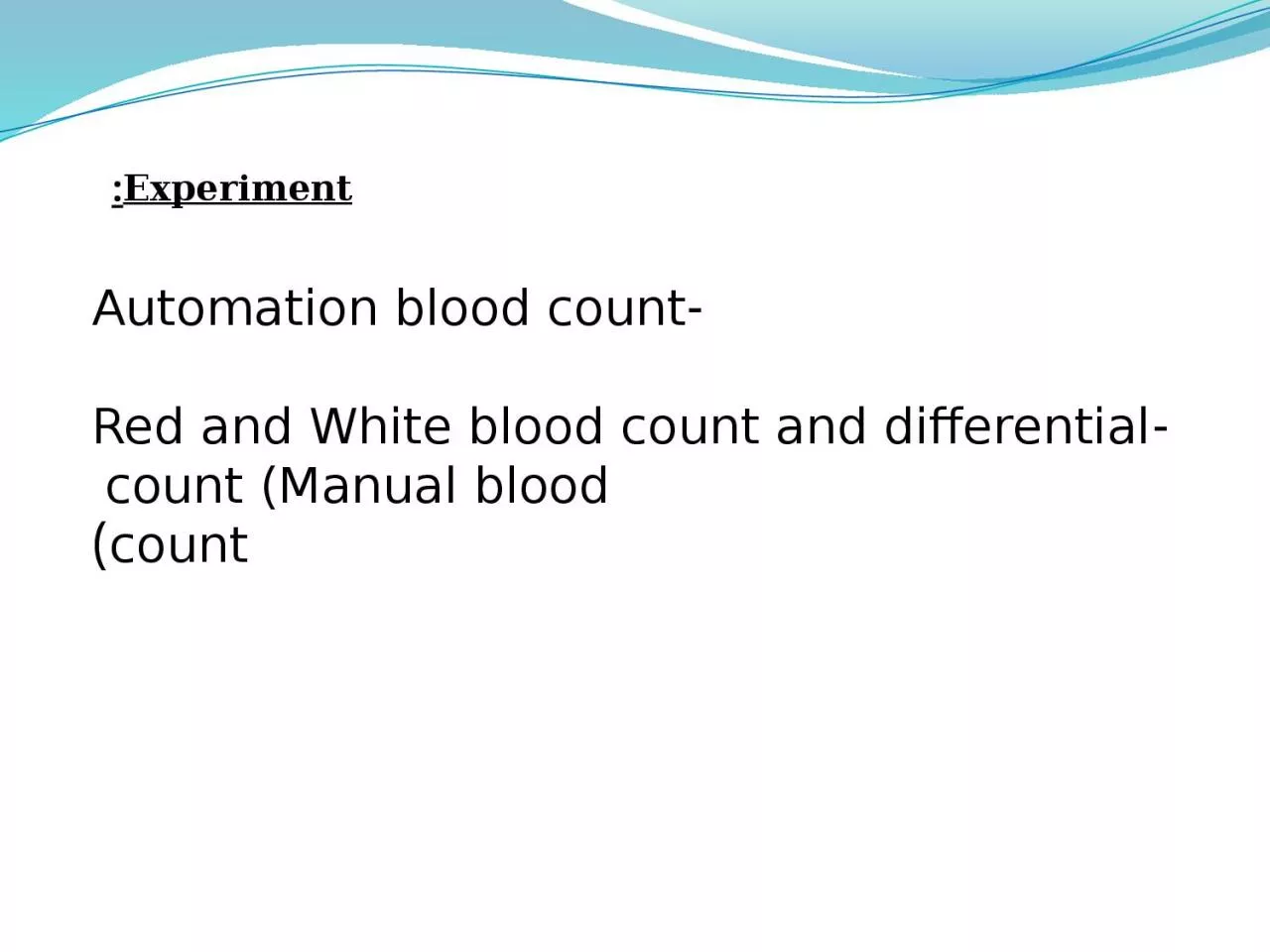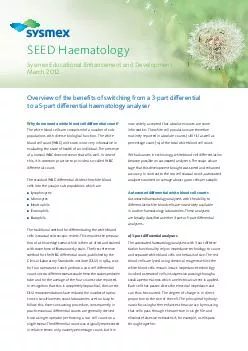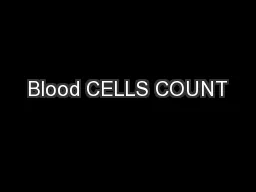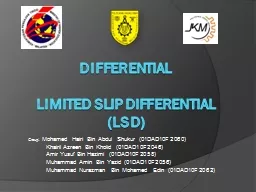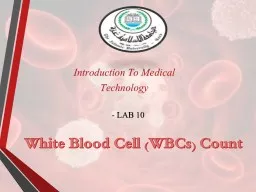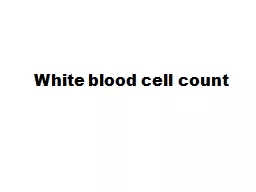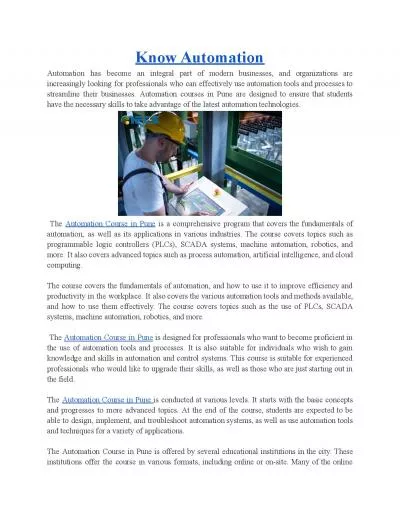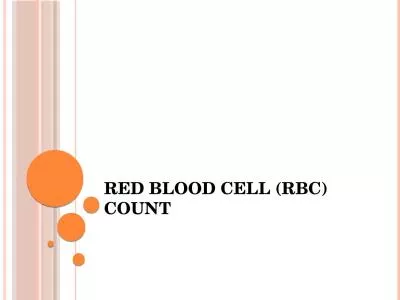PPT--Automation blood count -Red and White blood count and differential count (Manual blood
Author : elina | Published Date : 2022-06-08
count Experiment Introduction A complete blood count CBC is a test that gives information about the cells in a patients blood Important To understand
Presentation Embed Code
Download Presentation
Download Presentation The PPT/PDF document "-Automation blood count -Red and White b..." is the property of its rightful owner. Permission is granted to download and print the materials on this website for personal, non-commercial use only, and to display it on your personal computer provided you do not modify the materials and that you retain all copyright notices contained in the materials. By downloading content from our website, you accept the terms of this agreement.
-Automation blood count -Red and White blood count and differential count (Manual blood: Transcript
Download Rules Of Document
"-Automation blood count -Red and White blood count and differential count (Manual blood"The content belongs to its owner. You may download and print it for personal use, without modification, and keep all copyright notices. By downloading, you agree to these terms.
Related Documents

